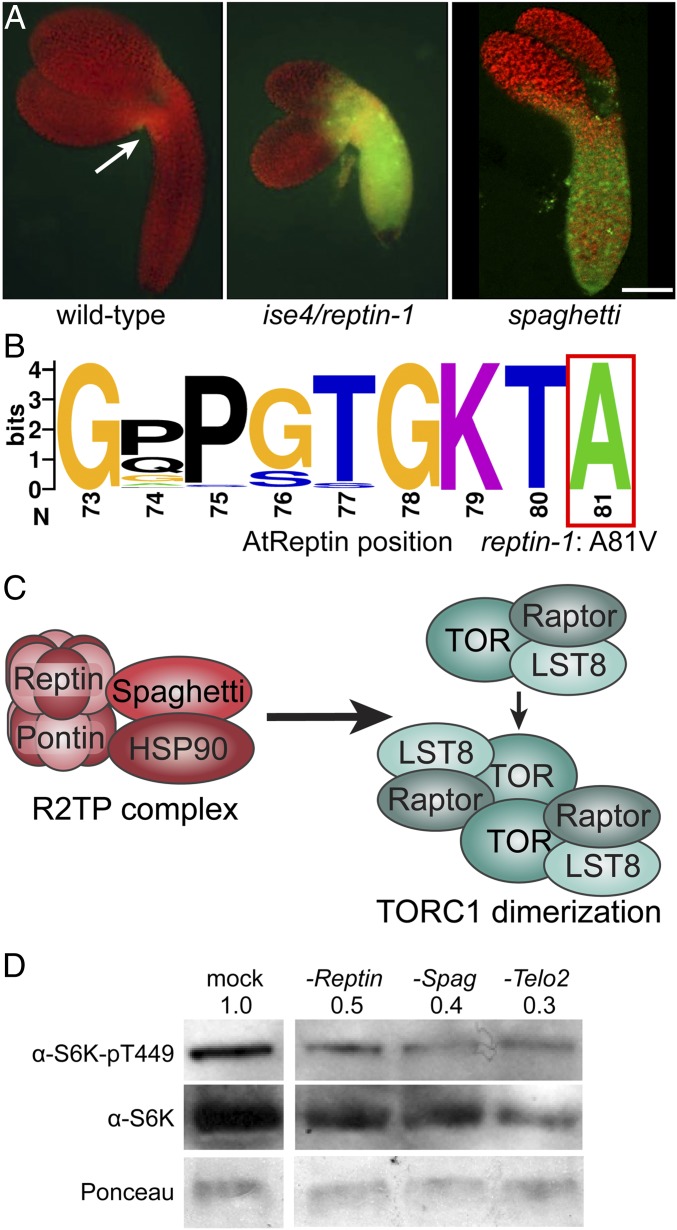Fig. 1.
R2TP cochaperone complex activity restricts cell–cell transport during embryogenesis. (A) Midtorpedo-stage wild-type, ise4/reptin-1, and spaghetti Arabidopsis embryos were removed from seed coats in a 10 kDa FITC-dextran solution, which loaded into plants at the hypocotyl–cotyledon boundaries (indicated in wild-type with a white arrow). After several washes to remove external FITC-dextran, embryos were observed using fluorescence microscopy (FITC, green; chlorophyll, red). The 10 kDa FITC-dextran rapidly moves through ise4/reptin-1 (Center) and spaghetti (Right), but does not move between cells in their wild-type siblings (Left). (Scale bar, 100 µm.) (B) Consensus Walker A motif across all eukaryotic Reptin orthologs. Amino acid positions follow AtReptin. reptin-1 causes an A81V missense mutation. (C) R2TP is a cochaperone complex composed of Reptin, Pontin, and Spaghetti, which recruits HSP90. R2TP stabilizes the TORC1 (TORC1: dark teal, Raptor; teal, TOR; light teal, LST8) dimer. (D) Knocking down expression of R2TP-TTT cochaperone subunits Reptin, Spaghetti, or Telo2 in Arabidopsis Col-0 with VIGS strikingly decreased levels of the TOR-dependent phosphopeptide S6K-pT449, reflecting significant inhibition of TOR activity. Total S6K levels and Ponceau staining were used for comparison. Note that steady-state levels of total S6K are also somewhat lower in reptin, spaghetti, and telo2 relative to Col-0, as expected in plants with chronic low TOR activity.

